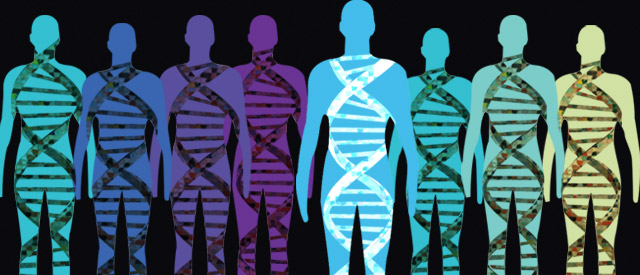With respect to the unprecedented advancements seen in genetics in the past few decades such as the Human Genome Project, the advent of gene therapy, and recently, the Human Epigenome Project, we are better able to begin traversing through the vast ocean of uncertainty that circumscribes our ancestry and our individuality. Through this journey, we are now beginning to understand the genetic basis for disease on a whole new level that is allowing us to treat patients on an increasingly personalized basis, one down to the very building blocks that makes up their genomes.
The genome, which consists of the aggregate sum of all the genetic information in our bodies, is composed of a tightly packed molecule known as DNA, a very small fraction of which we have known to actually code for protein. Until recently, its larger counterpart laid dormant as a gray area as we did not fully understand its function and, consequently, was labeled as “Junk” DNA.
30 research papers published last week in major peer-reviewed journals such as Science, Nature, and The Journal of Biological Chemistry, among others, contend that the vast majority of our genome, this so-called “Junk” DNA, does, in fact, have some biochemical purpose, according to the New York Times.
The papers represent a decade’s worth of work by an international collaboration of 440 scientists from 32 laboratories in the Encyclopedia of DNA Elements (ENCODE) project. ENCODE was launched by the National Human Genome Research Institute, according to the National Institutes of Health, back in September 2003 with the intention of identifying all functional elements of the human genome.
Daniel Goldenberg, senior psychology major at the University, thinks that the discovery of the function of such “junk” components of DNA is a significant and worthwhile asset to the journey of human development. “Furthermore, it is a stepping stone from which we can be able to unlock the mystery behind it all.”
Nick Kulka, a junior majoring in biology at the University, also sees the groundbreaking research by ENCODE’s scientists to be “an exceptional discovery,” one “that is sure to enhance our knowledge about the inner workings of DNA and gene transcription.”
At the forefront of ENCODE’s latest findings are stretches of Junk DNA that act as a series of genetic switches involved in a complex mechanism of regulating cells, tissues, and organs – much like that of the interconnections of the endless stream of wires in server rooms, but a tad bit more complex.
ENCODE’s efforts, “… along with other related projects, will give the scientific community a vast body of resources for future human genomic and proteomic studies,” said Dr. Ellen Doss-Pepe, Lecturer Professor of Biology at the University. “Future studies will help to broaden and deepen the interpretation of the organization of and regulatory mechanisms of a gene, with significant implications and insights into human disease.”
The implication, which almost immediately can be studied, said the New York Times, is how alterations in non-gene components of DNA, namely Junk DNA, can contribute to human disease. Because changes in Junk DNA do not directly alter the protein encoding capability of DNA, ENCODE’s advances should help shape the future of the rising field of epigenetics, which is the study of heritable changes in DNA (usually from environmental factors) without any changes in the actual DNA sequence.
In the case of identical twins for instance, epigenetic advances may help quantify the extent to which environmental influences can activate those regulatory switches and the effects such switches can hold on the individual’s unique susceptibility to a particular disease as opposed to his or her twin who may have been reared in an albeit slightly different environment.
Errors and mutations in such switches, therefore, could have far reaching consequences for the regulatory mechanisms they uphold, leading to adverse reactions and disease. With proper funding into the continued research of this new venue, scores of new drugs, treatment therapies, and research methods can be developed, allowing patients in the near future access to a personalized medicine tailored to their genome.
IMAGE TAKEN from www.nyas.org




